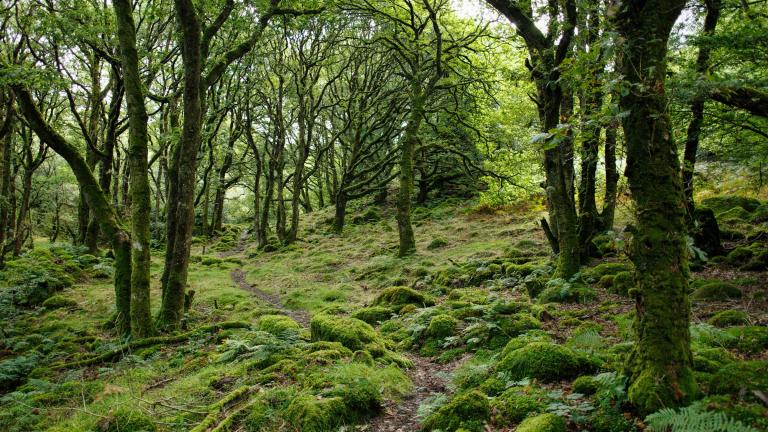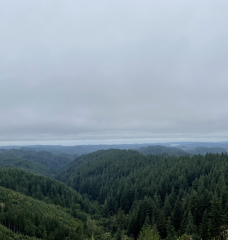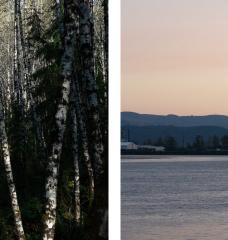
New research explores the historical trends of changes in vegetation under rising levels of CO2
Carbon dioxide (CO2) in the atmosphere has been increasing since the industrial revolution due to human activities. Burning fossil fuels, releasing chemicals into the atmosphere, reduction of forests and the rapid development of industrial activities are emitting carbon dioxide into the atmosphere, altering global climate patterns. The increase in CO2 is driving global warming and fueling plant growth and photosynthesis. This process is known as the “CO2fertilization effect” – a phenomenon when carbon emissions boost photosynthesis and in turn increase plant growth. Although scientists have predicted increasing plant photosynthesis activity in recent decades in response to rising levels of CO2, there hasn’t been a way to accurately quantify just how much. Now, new research published in Nature from scientists at MIT, UC Berkeley and other international institutions, places a number on the increase in global photosynthesis from the last four decades.
Assistant Professor of Civil and Environmental Engineering, César Terrer discusses the latest research that quantifies the amount using historical trends while he’s working to understand and predict future patterns of what might happen to our ecosystems under rising CO2 levels.
Q: Your new paper suggests that rising carbon dioxide emissions resulted in a 12 percent increase in global photosynthesis between 1982 and 2020. Is it a larger number than you thought?
A: It’s not as large as some of the previous estimates using proxies. But it’s still a pretty large increase. It’s equivalent to plants taking 14 petagrams of carbon out of the atmosphere each year. To put the 14 petagrams number into context, all countries in the entire world emit about 10 petagrams of carbon per year, so 14 petagrams is really a lot. Every year plants take up more carbon than they release in the atmosphere, that means that plants and soils play a key environmental service that is helping to slow down the rate of global warming. It’s actually estimated that without this CO2 fertilization effect the current climate would have warmed by an additional 40% since the industrial revolution, so it’s really an essential service that ecosystems are providing for our climate.
The future magnitude of the CO2 fertilization effect is however very uncertain; we don’t know to what extent plants will continue absorbing increasing quantities of carbon dioxide. There must be a limit and that limit is unknown. In my previous research published in Nature Climate Change, we found that the future magnitude of the CO2 fertilization effect by the end of the century may be three times lower than previously thought. This was based on a synthesis of field observations and satellite data. In addition, another recent research study published in Nature suggests the amount of carbon sequestered in soils may be lower than previously thought, at least in forests. This is because we found a tradeoff between storing carbon above ground in biomass and below ground in soils. Thus, many forests that were predicted to show accumulation of carbon in both biomass and soils will actually show decreases in soil carbon sequestration.
Q: How did you discover an accurate estimate of global photosynthesis from the last four decades?
A: Trevor Keenan (UC Berkeley), lead author of the paper, envisioned an innovative approach leveraging three decades of carbon sink estimates made by the Global Carbon Project. We compared these estimates with predictions from satellite images and models using carbon exchange between the atmosphere and land to make carbon sink estimates. This approach reveals a much more accurate estimate of what the increase in photosynthesis is in recent decades.
Q: What do the findings suggest for climate change actions? Can we slow down global warming by planting more trees?
A: The findings demonstrate the key role vegetation plays in regulating our climate and the importance of deforestation and preserving our natural ecosystems. If we cut down forests, we are limiting our ability to slow down climate change. Planting more trees to slow down global warming is always a little bit dangerous because you are geoengineering the planet. Based on the results from my previous Nature study, it’s important to be cautious about planting trees as a nature-based solution, because our results suggest that when you plant trees you increase the amount of carbon that is sequester in above ground plant biomass, but there might be unexpected negative consequences below ground that may partly offset the benefits of increasing above ground biomass. It’s more crucial that we protect all of our natural ecosystems. Grasslands in particular store a lot of carbon below ground that is invisible to the human eye but are still a really good mechanism to slow down climate change and store carbon in the long term.
But even though vegetation plays a key role in slowing down climate change, the amount of carbon dioxide that plants sequester every year is not nearly enough to stop global warming completely. If we really want to slow down the increase in temperatures, we need to cut down CO2 emissions.





